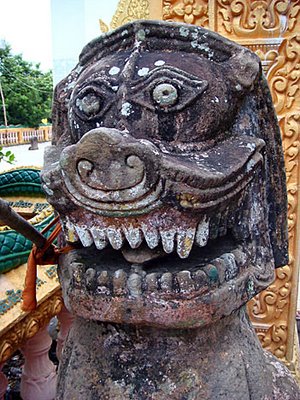 This ferocious lion's head stands outside the entrance to the modern vihara. It looks very old but I wasn't convinced.
This ferocious lion's head stands outside the entrance to the modern vihara. It looks very old but I wasn't convinced.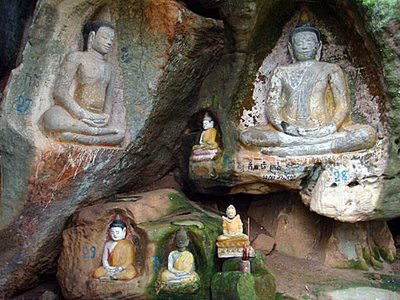 Some of the rockface carvings of Buddha that populate the summit
Some of the rockface carvings of Buddha that populate the summit and its numerous Buddhas have been a center of worship since the reign of King Ponhea Dharma Reacha, who left the throne in 1494. It is believed some of the rockface carvings, particularly the large Buddha attaining Nirvana statues of more than ten metres in length, date back to that time. The modern day vihara of Prasat Touch has little evidence of its predecessors of earlier times whilst the legend of Santuk mountain has its roots in Khmer folklore and will easily take up half an hour of your time if you want to listen to a local recount the tale. The name of the mountain was known as Phnom Ason Mean Tuck (the mountain of sudden suffering), linked to the tale of a King and his ill-fated child, with the name changing to Phnom Santuk over time. The kilometre long grueling climb to the top used to be made easier by a group of men who for a fee, would carry you to the top in a sling hammock, though I'm not sure this is still the case. There were just a few beggars lining the steps when we arrived. Near to the top is a sacred spot where small coins could be dropped down a crevice between the large boulders, where the sound the coin makes, promises a good future. Today the spot is marked with a blue painted arrow and a troop of monkeys have made their home in the nearby trees. I didn't see it on this visit but one of the buildings at the summit contains a large tank of water in which a magical pumice stone floats in the water. And on the eastern side of the mountain is a waterfall, but again, not enough time on this fleeting visit to enjoy such a treat on a scorching day.
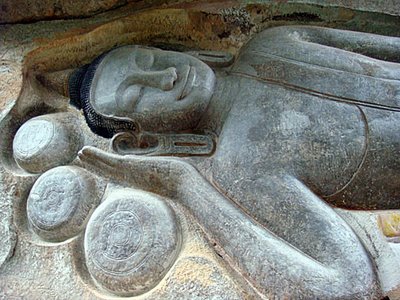 Buddha achieving Nirvana at the summit of Phnom Santuk
Buddha achieving Nirvana at the summit of Phnom Santuk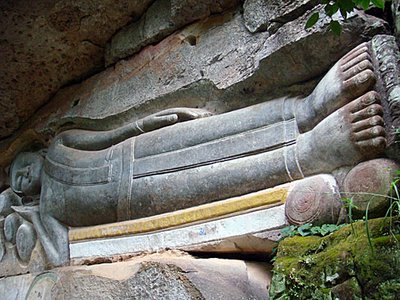 This reclining Buddha was more than 10 metres in length
This reclining Buddha was more than 10 metres in length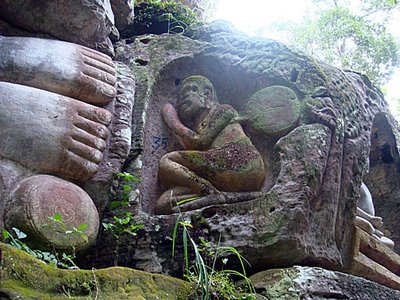 At the feet of Buddha is this worshipper carrying a fan under his arm
At the feet of Buddha is this worshipper carrying a fan under his arm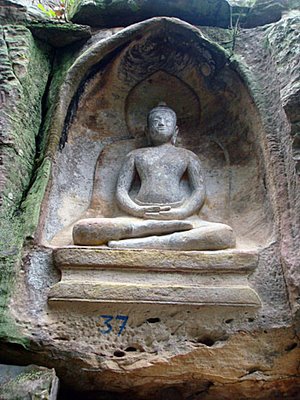 Hewn from the sandstone rock, this Buddha makes an impressive statement
Hewn from the sandstone rock, this Buddha makes an impressive statement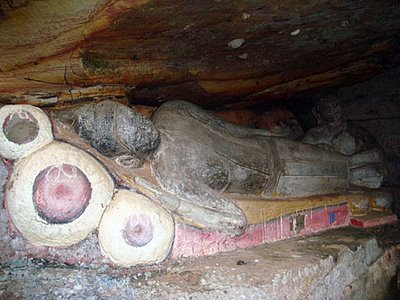 Another reclining Buddha inside a small cave behind the main vihara
Another reclining Buddha inside a small cave behind the main vihara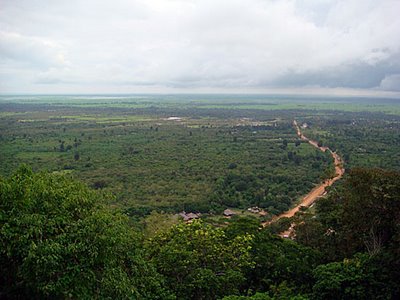 The view from the top of Phnom Santuk looking south
The view from the top of Phnom Santuk looking south
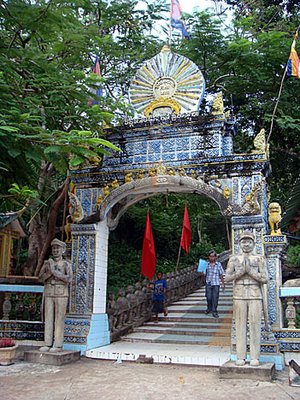 Back on terra firma, those 809 steps will give me nightmares for months to come
Back on terra firma, those 809 steps will give me nightmares for months to come
 This ferocious lion's head stands outside the entrance to the modern vihara. It looks very old but I wasn't convinced.
This ferocious lion's head stands outside the entrance to the modern vihara. It looks very old but I wasn't convinced. This ferocious lion's head stands outside the entrance to the modern vihara. It looks very old but I wasn't convinced.
This ferocious lion's head stands outside the entrance to the modern vihara. It looks very old but I wasn't convinced.
0 Comments:
Post a Comment
<< Home